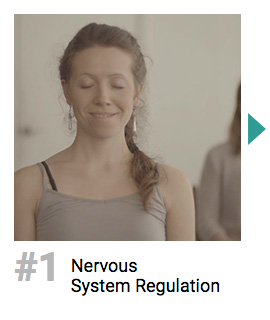Sense Writing was developed by former Creative Writing faculty at New York University’s Tisch School of the Arts, Madelyn Kent, to bring pleasure and sustainability to your creative process.
Rewire Your Creative Writing
With over 100 specialized writing and neuro-sensory movement sequences, Sense Writing is a groundbreaking approach that anyone can use to unleash their creativity.
Refine Your Voice and Bring Your Vision to Completion
Sense Writing is an innovative and pragmatic approach to the creative process that merges the principles of Somatic Education with the art of writing
A resilient creative practice is built on a healthy creative process.
While you are writing your stories, memoirs, essays, poetry, plays or screenplays, you are simultaneously engaging in a process that reveals how your creative intelligence works.
Sense Writing gives you the tools to refine this ebb and flow between writing craft and process so that your writing practice becomes more pleasurable, buoyant, and resilient.
For the first time, Sense Writing merges principles of Somatic Education (the Feldenkrais Method) and Neuroplasticity with the writing process, allowing you to train your nervous system away from habits of anxiety and emotional blocks. As you unlearn old habits, you will replace them with more fruitful new ones.
The Five Principles of Sense Writing
Principle I: Constraints and Freedom
We often hear about “freedom from constraint” but in this practice, this means actually using constraints to get to a sense of openness. This may seem at first paradoxical, but as one student writes: “What I love about Sense Writing is the imposition of restraint to allow freedom. How doing less frees up the energy to flow more.” Principle I teaches you how to utilize constraints to liberate your writing process. That is the beauty of constraints.
Principle II: Containment and Orientation
When we learn to set boundaries in the landscape of our writing, we can begin to know where we are. Learning to settle into one setting or area increases our sense of safety and allows us to process and integrate more sensation. Containment is a powerful tool that can help us orient ourselves and integrate more and more details of our writing landscapes. Principle II teaches you how to enhance your senses so that you experience a far richer (and more pleasurable) writing practice.
Principle III: Differentiation and Integration
Another paradox: when you take the time to go deeper and differentiate specific aspects of your writing, you allow those things to clarify and refine. Then when you return to write the scene as a whole, you will find that all the pieces come together, integrated and with ease. Principle III teaches you how to safely navigate different aspects of your writing so you can bring them to a natural integration.
Principle IV: Articulated Sensitivity
When people cannot feel what they are doing in their senses, movements, thoughts and emotions, they cannot discover where they are—in any landscape, real or imagined. What happens when you actually articulate sensitivity in all these areas? Though this principle is a major part of all the principles, we go deeper into unexpected variables in our writing in this principle. As this awareness expands, the hidden parts of ourselves and our writing begin to yield and unexpected connections are made.Principle IV teaches you how to nurture a complex awareness within your writing and expand your pieces.
Principle V: Non-Habitual Flow
Habits often eliminate the opportunity to discover. By coming to our work in non-habitual and sometimes indirect—and playful—ways, we can begin to dissolve “normal” clumps of our writing habits, make new choices, and getting closer to our own voice. Principle V teaches you how to not just enter but sustain a state of effortless flow in your writing.
In Sense Writing, each principle can be mastered at progressively deeper levels over time, making it highly accessible to both seasoned and new writers.
An Overview of Sense Writing’s principles
✓ introduction ✓✓ immersion
*Sense Writing I, II, and III are in-person workshops usually held in New York City.
*Sense Writing’s 12-week program, the most comprehensive way to study Sense Writing, is an online group program, and is a pre-requisite to the Advanced Workshop.









